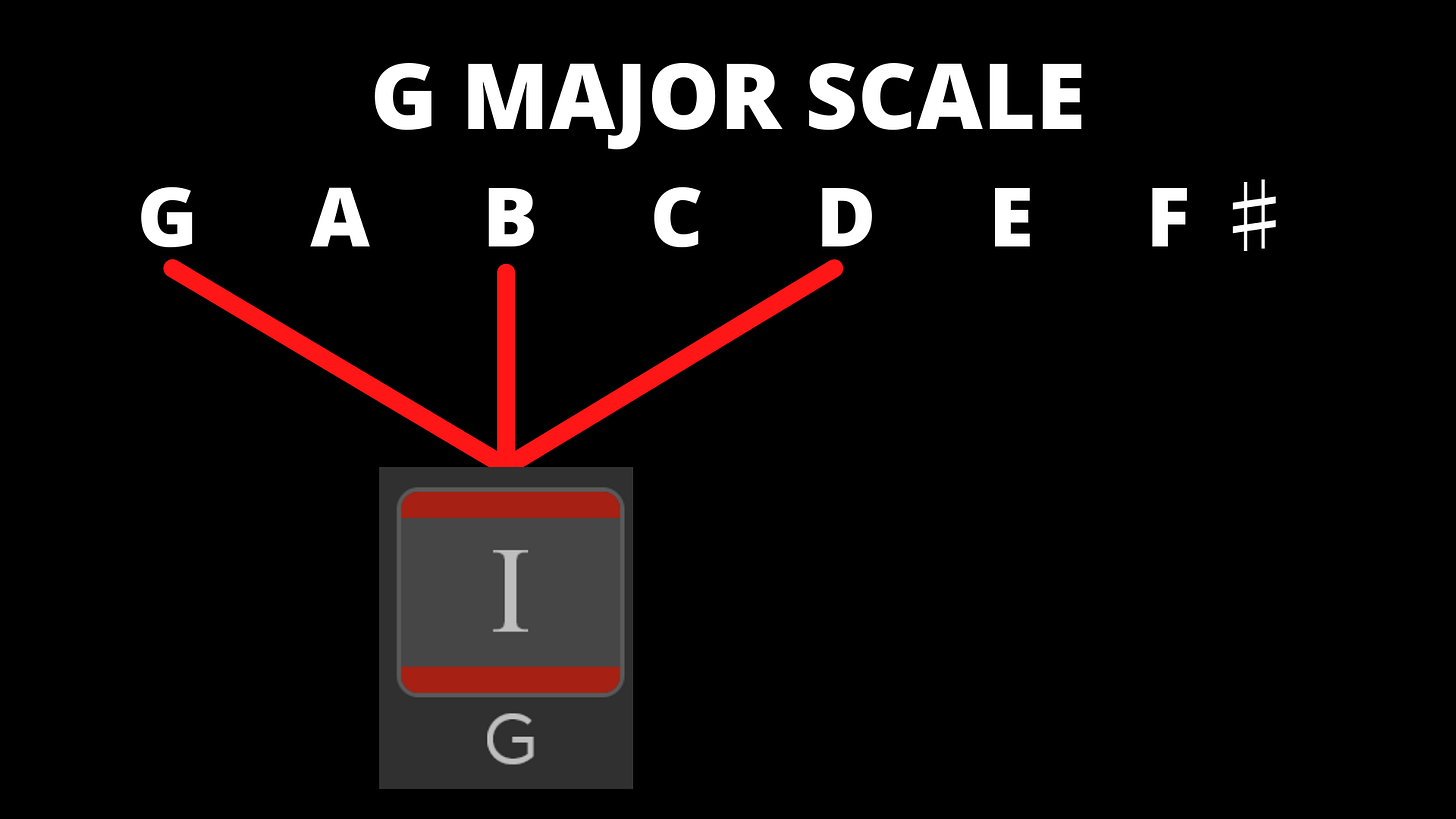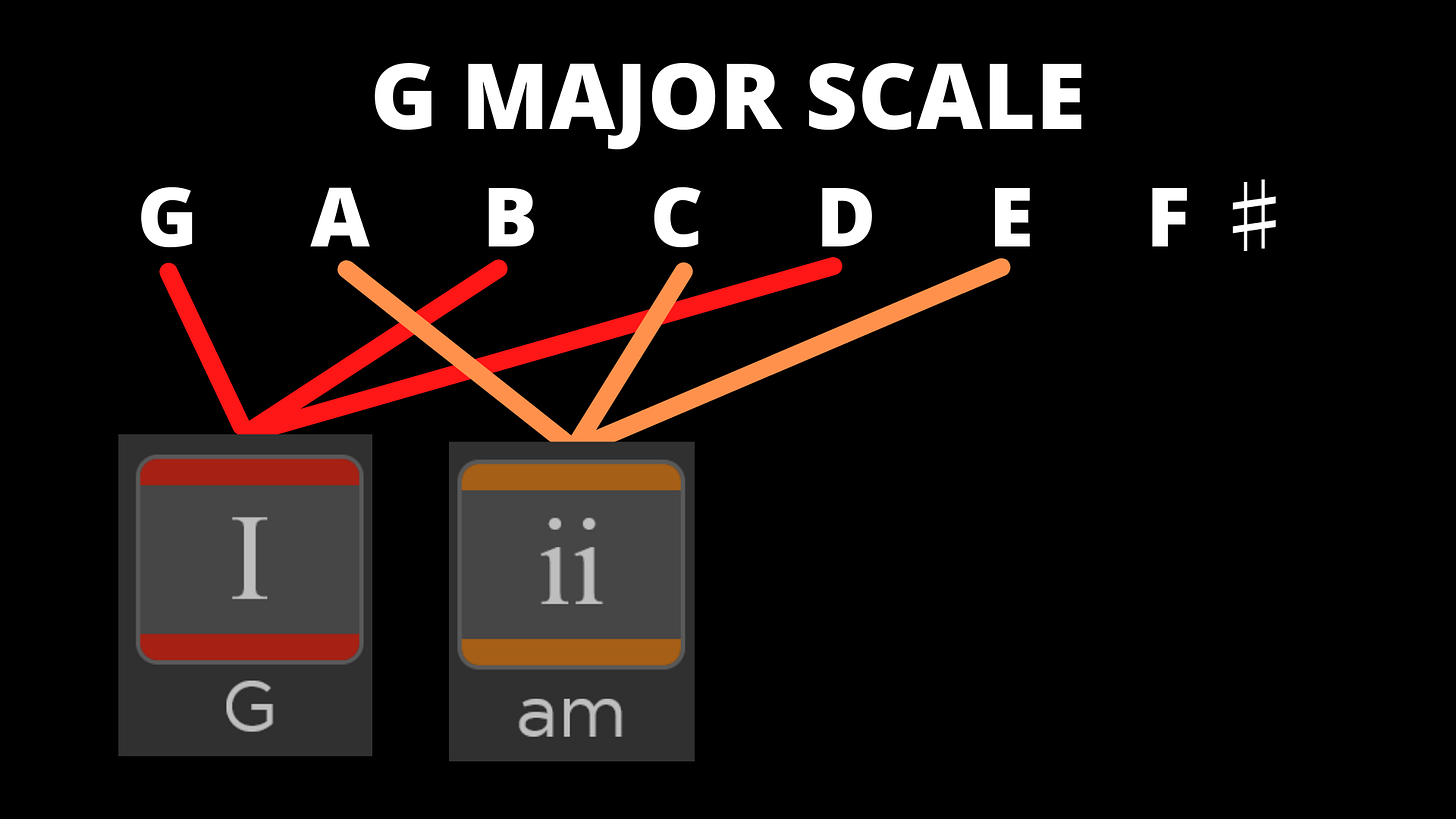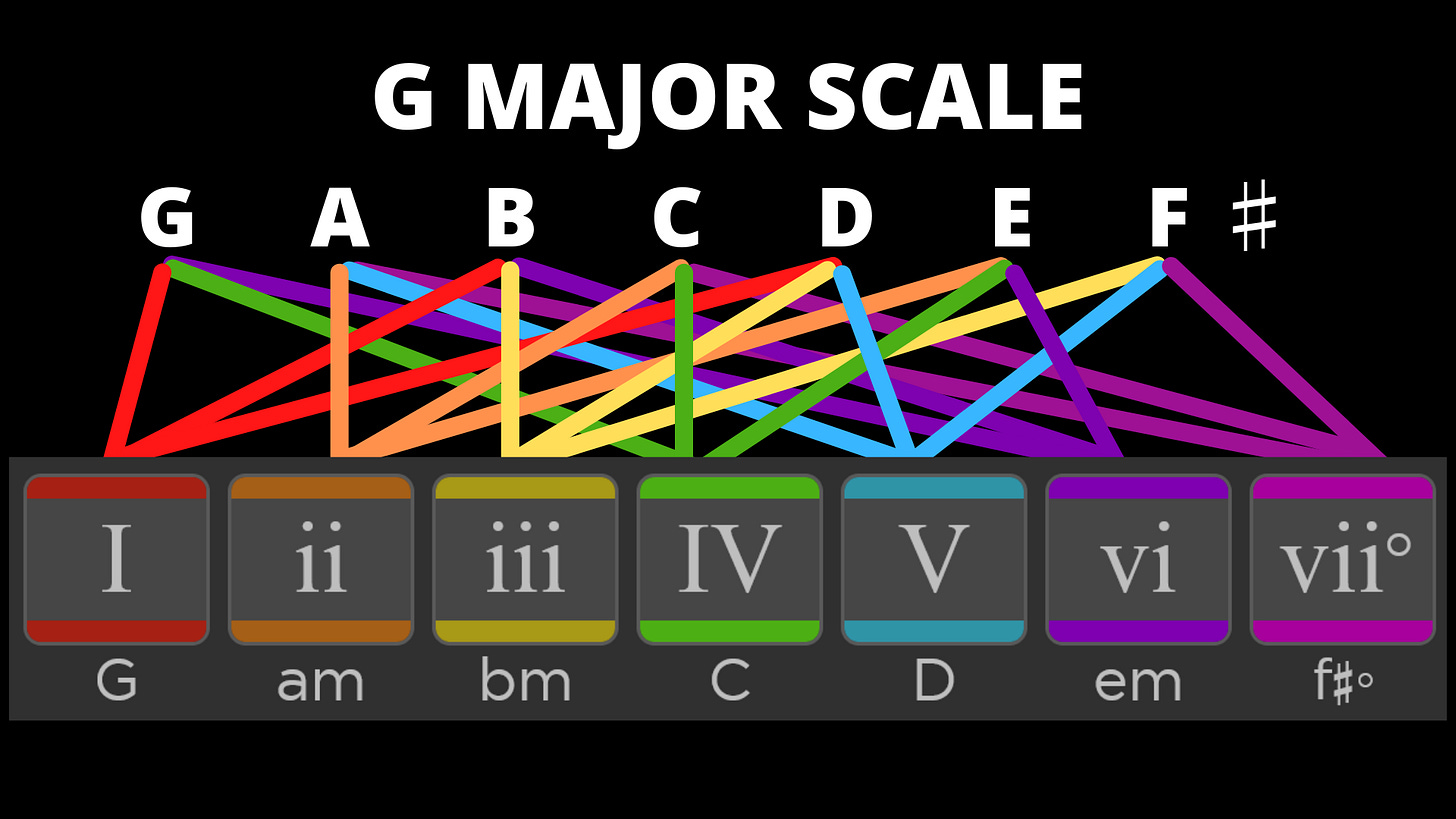Where do chords in a key come from?
All these chords but why are they here? Read on to find out...
If you’ve been songwriting for any length of time then you’ll be familiar with the concept of keys.
You have a group of chords that sound good together. You can use these chords to create progressions. You might know about the Roman numerals that they get labelled with and how these show us the function of the chords.
But where do these chords come from in the first place?
Let’s start with a definition of “key” in Western music.
Tonality (from "Tonic") or key: Music which uses the notes of a particular scale is said to be "in the key of" that scale or in the tonality of that scale.
So the basis for each key is a particular scale.
But how does this get us to a list of chords?
The most common chords in tonal music are triads. They are constructed with three notes and will be either major, minor, diminished or augmented.
The three notes are called :
1st or Root : The note which gives the chord it’s letter
3rd : The interval above the root being a minor third (3 half steps or semitones) or major third (4 half steps or semitones)
5th : The interval above the root being a diminished fifth (6 half steps or semitones), perfect fifth (7 half steps or semitones) or augmented fifth (8 half steps or semitones)
Next we need to use a scale to create a set of triads. So it’s time for an example!
I will use the G major scale to demonstrate this, starting with the first chord, the I or tonic chord.
To construct the first triad, you start on the first note in the scale. This is your Root or 1st note. Then you skip a note and add the next note. This is your 3rd note. Then skip another note and this is your 5th.
In this example we have 1st G, 3rd B and 5th D. G B and D are the notes of the G major chord.
As we built this off of the 1st scale degree it gets labelled with a 1 Roman Numeral, I. It is uppercase because the triad is major. If it was minor or diminished it would be lowercase.
We can then move on to the next note in the scale.
We follow exactly the same process. This time we start on the second note A, skip a note to C and then skip a note to E. A C and E create an A minor chord. We started on the second scale degree so label it with 2 Roman Numeral ii. It is lowercase because the chord is minor.
Here are the full set of 7 chords in the G major key. The chords in a key are also known as the Diatonic chords, with other chords being Chromatic.
This process I’ve outlined, using a note and then skipping one in the scale, is also known as stacking thirds.
People sometimes confuse key with scale. A scale is an ordered set of notes typically used in a key, while the key is the "centre of gravity" established by particular chord progressions
Hopefully that has helped you to understand where these sets of chords have come from. The example key here was G major but it could be any scale you like, major minor, modal or beyond.
The chords you construct will reflect the sound and nature of that scale.




